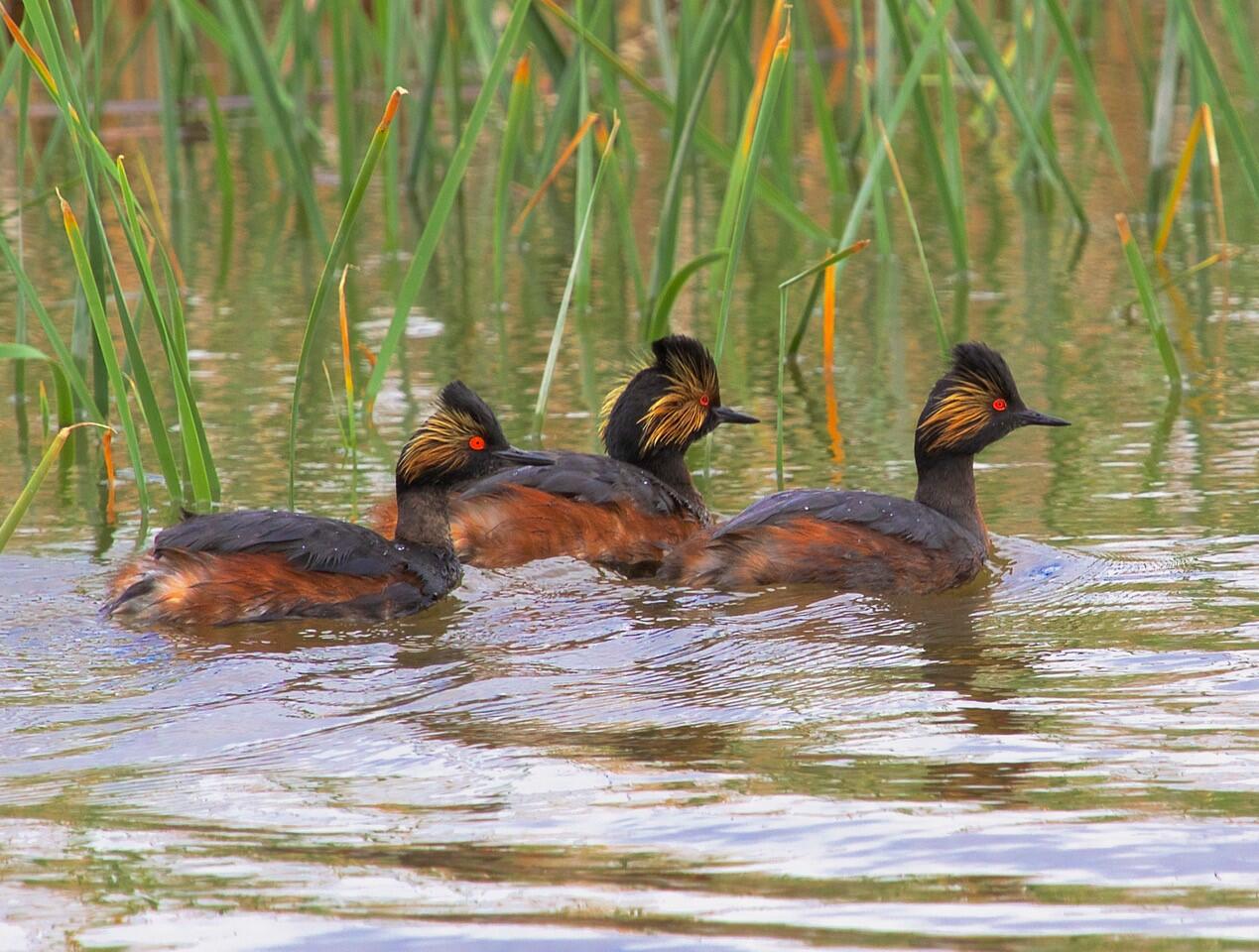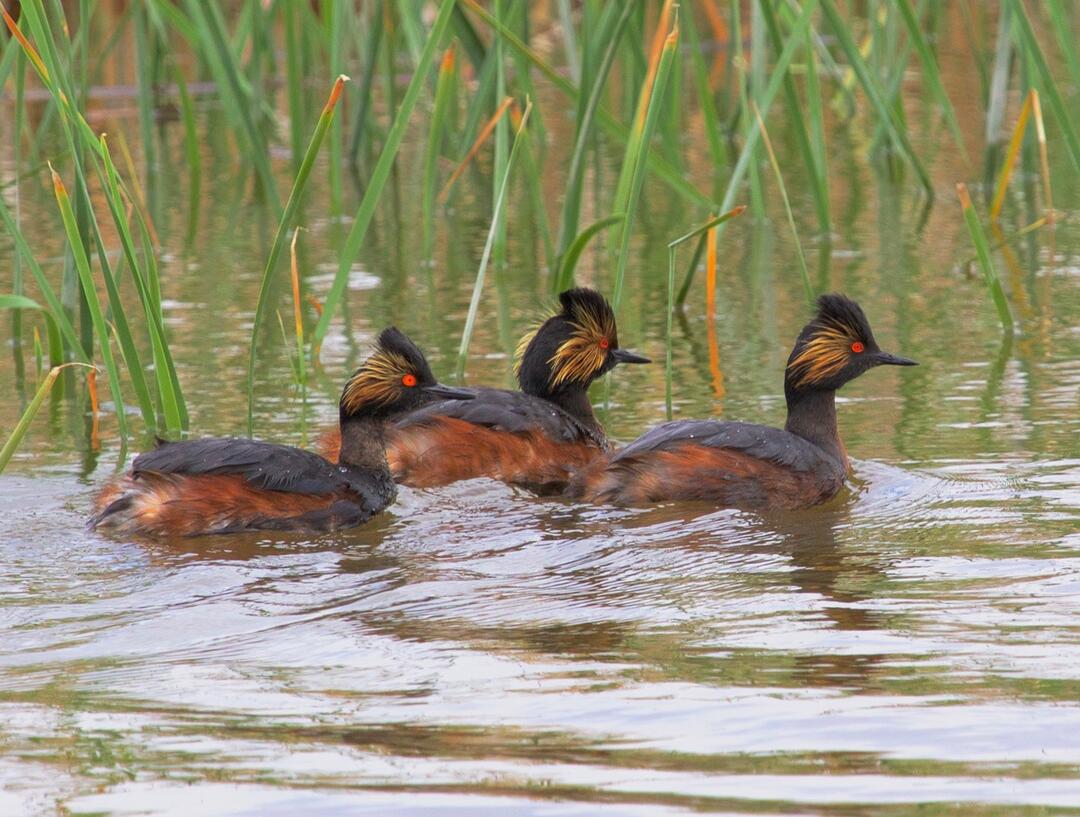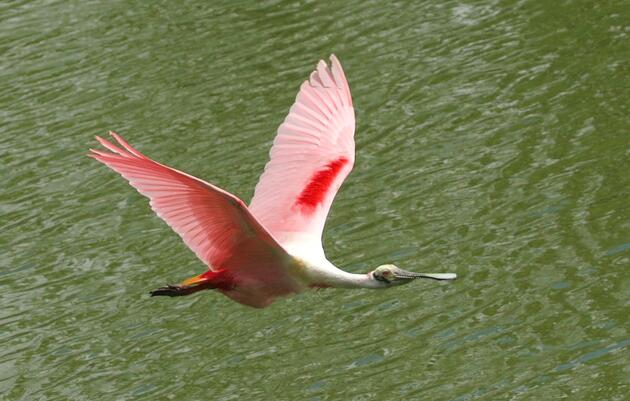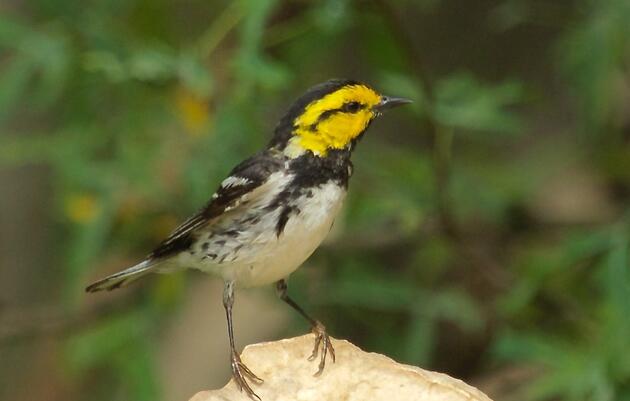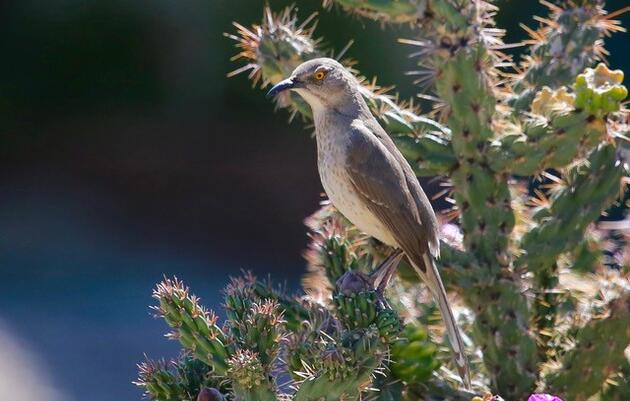By Tom Taylor, Resident Birder, Santa Fe, NM
During the last few weeks this column has taken you on a cyber-tour around the country during the spring songbird migration. This is the fifth column during the COVID-19 pandemic confinement. The reader can link to other articles in the series using the references at the bottom of this page. The tour began in the southwestern part of the US, where the author resides in Santa Fe, NM. For more than ten years each spring he has taken at least one photographic outing to another part of the country to follow the arrival of the neo-tropical migrants from Central and South America.
The Texas coast served as the background for the last two articles. And in those visits we sampled a limited number of the waterfowl species in addition to the migrating songbirds. Many of these wetland and wading bird species are only winter residents along the Texas coast. Large numbers of these birds migrate north through the central portion of the United States in the spring on their way to nesting areas as far north as the Arctic. The Whooping Crane is probably the most widely recognized of these travelers due to the extraordinary efforts taken to recover it from near extinction. Its flight path, beginning in early March from its wintering grounds in the Aransas National Wildlife Refuge in Texas, takes it on such a journey to the Wood Buffalo National Park in the Northwest Territories of Canada.
There are necessary rest stops along the way – one of these being Quivera National Wildlife Refuge in central Kansas. The refuge is a terrific birding location with a total checklist of 344 species and is a must visit at the end of April when huge numbers of waterfowl make a migration stop. One example is the Eared Grebe shown in the lead photo - a diving bird that easily captures your attention with its deep red eye highlighted by an iridescent splash of golden arcs across a black-colored face.
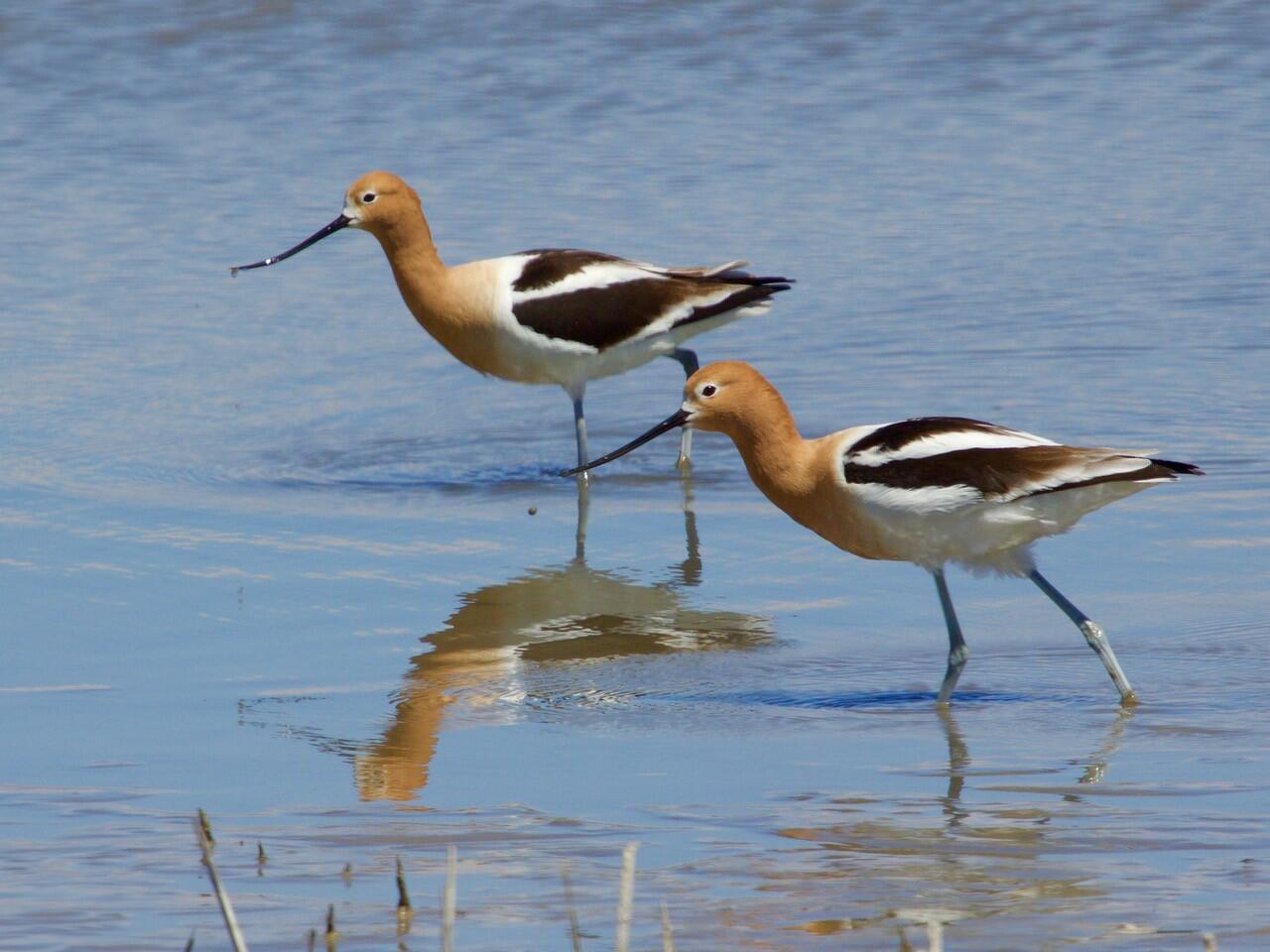
The American Avocet is one of the most colorful and distinctive wading birds found along the shallow water expanse at the refuge. They have a distinctive way of foraging on invertebrates in shallow water, where they swish their delicate upturned beak side to side in what is called a scything motion.
Equally interesting and commonly found on the Big Salt Marsh at the refuge are Black-necked Stilts. These waders present themselves very distinctively with their long pinkish legs and delicately pointed beak while foraging in shallow water. The photo shows a mating pair, where the female has a brown back. In late April under the right circumstances, one can encounter enormous numbers of Wilson’s Phalaropes. I have even seen them wandering about the gravel roadways at the refuge and surrounding areas. Under more normal circumstances in shallow water, they are usually found spinning rapidly around in circles, as is the case for the bird in the photo. (The photo was cropped to show the circular wavelet created as a consequence). This motion stirs up invertebrates near the center of the whirling action and the bird will periodically swoop into the center to feed, as this bird has just done. Note that this is a female in breeding plumage –unlike most bird species, a coloration that is more prominent than the male.
The refuge is a stop for countless numbers of sandpipers. There are always ample numbers of Lesser and Western Sandpipers. But other less common species can be the delight of any birding day. I have chosen two sandpipers that I especially prize – and hope the reader agrees with my identification, as the sometimes indistinct variation in sandpipers can lead me astray. The first such photo shows a White-rumped Sandpiper, which remarkably has already flown from Patagonia in South America to nest in the northern part of the continent. The reader doesn’t have the advantage of viewing the white rump, which is quite obvious in flight. The second photo in this pairing shows a Stilt Sandpiper, which to this point has only had to travel from Central America on its journey to the northern shores of the continent on the Beaufort Sea, including the Arctic National Wildlife Refuge in Alaska. Note the distinctive reddish cast to this bird’s cap and ear patch.
My trips to Quivera NWR have always produced Snowy and sometimes Piping Plovers. These birds are typically seen wandering around the roadside adjacent to the Big Salt Marsh. Indeed, they sometimes appear to be tiny robotic toys scurrying across the open, sometimes sandy landscape at the edge of the shallow ponds. Having migrated from the gulf coast or central Mexico, the Snowy Plover is very commonly found at the refuge, where it does nest. In contrast, the Piping Plover is much harder to find – being listed as uncommonly seen. Because the Piping Plover is on the endangered species list, meaning its numbers are low, it is a special treat to see one at close quarters, as shown in the photo. The very pronounced orange-colored base of the bill immediately catches one’s attention to such a rare find. These birds, to a large extent, nest in the prairie country of the upper Midwest.
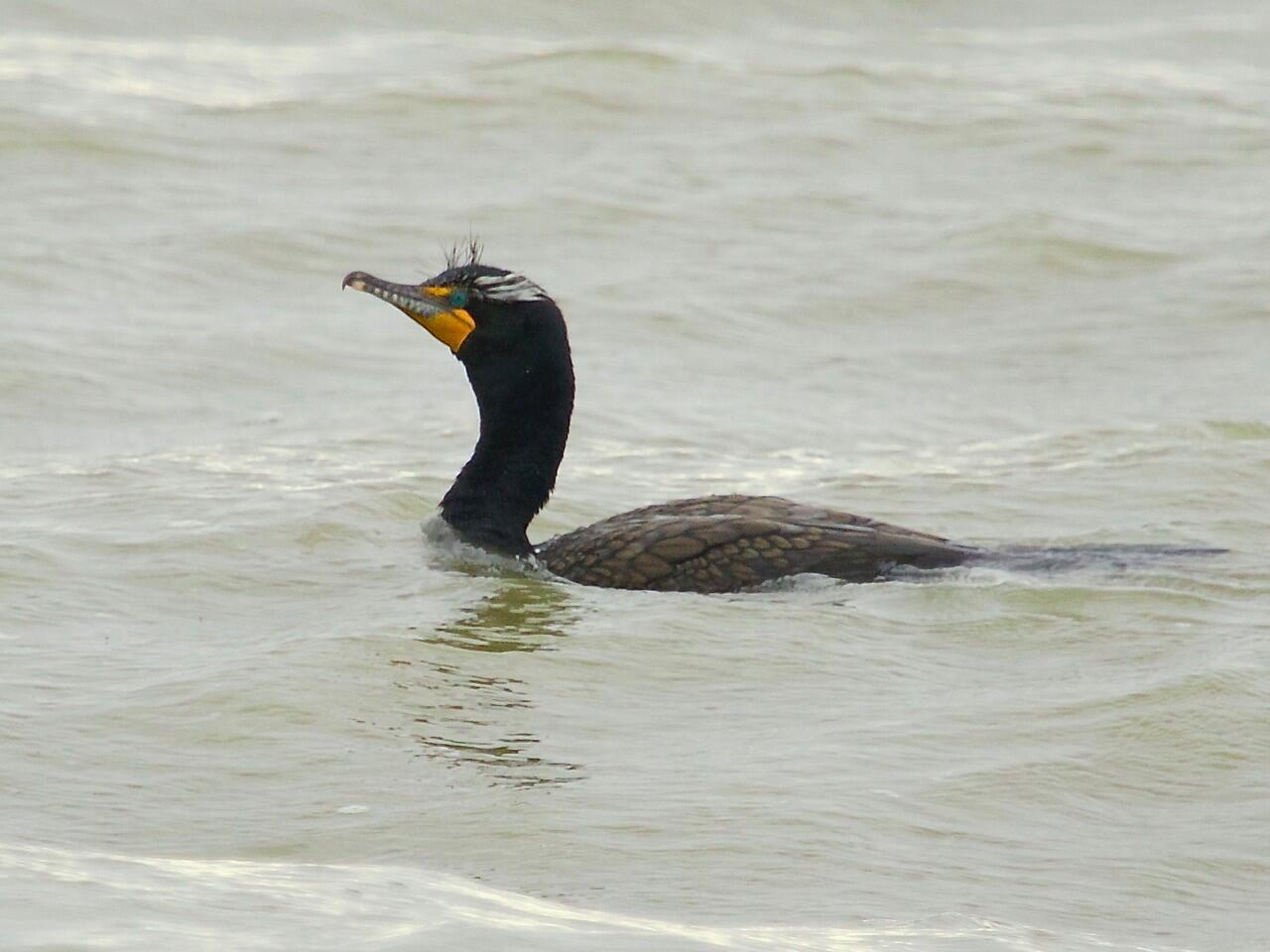
To finish this segment, I want to point out that there is an equally good location for these migrating waterfowl some 40 miles north of Quivera NWR at the Cheyenne Bottoms Wildlife Area, which is the largest marsh in the interior United States with 12,000 acres of shallow water. Naturally, both these locations can have more or less productive days for birding. So, an overnight stay finds one at the town of Great Bend, midway between the two refuges, which gives an easy opportunity to stop at both locations to optimize the situation. Although I have had memorable birding experiences at both Cheyenne Bottoms and Quivera NWR, there are a couple instances that make the former special. The photo of the Double-crested Cormorant taken at Cheyenne Bottoms in late April is the first time that I have seen the double crest, a tuft of feathers only present during the breeding season. In general, this diving bird has a distinctive orange-colored boundary around its beak and chin. A close-up look reveals prominent gem-like green eyes.
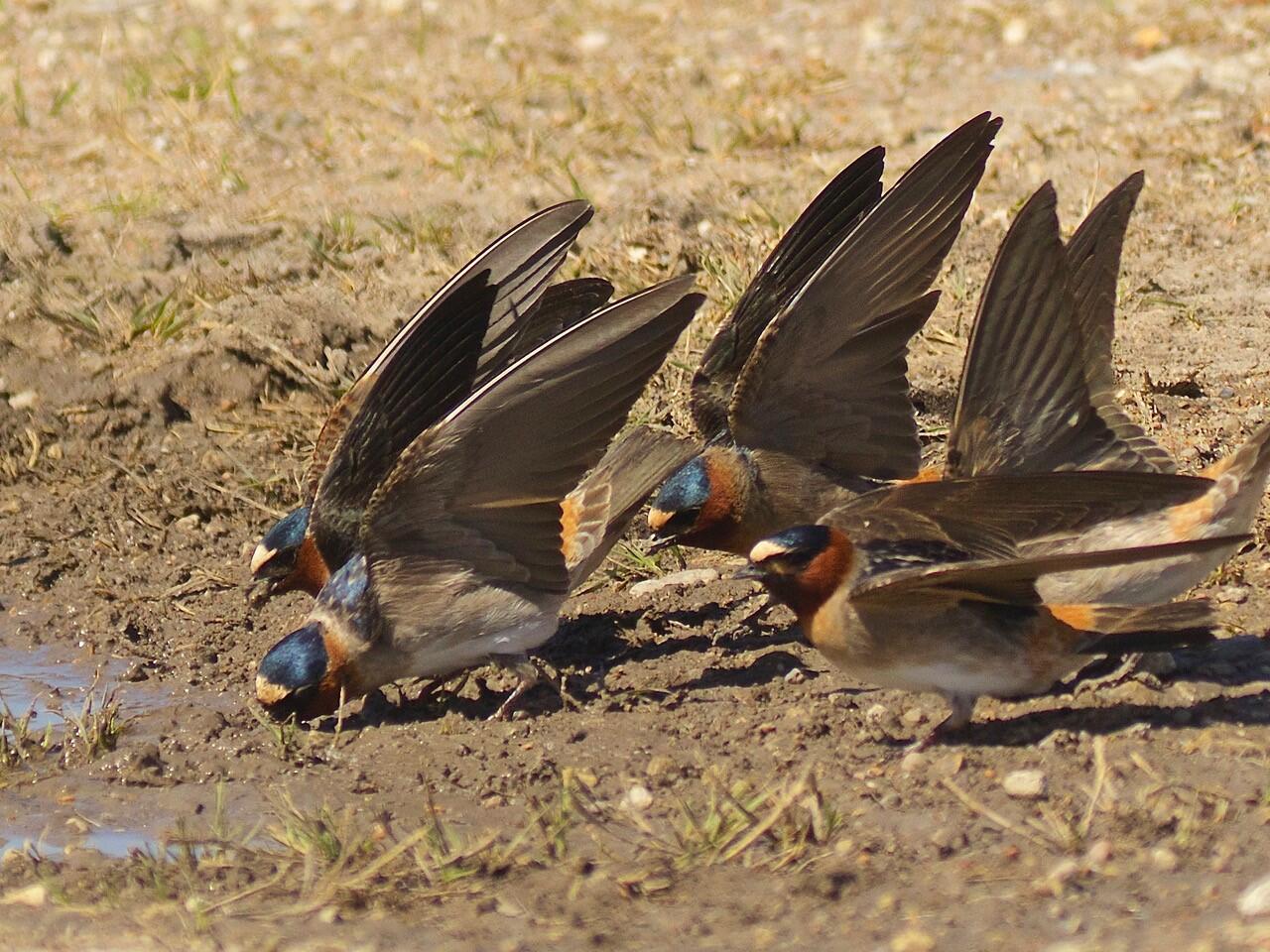
I have been entertained by a large colony of Cliff swallows found in the southwest corner of Cheyenne Bottoms. During my late April visits there I have been able to watch as they coat their beaks with mud from roadside puddles during nest building at a nearby bridge. They ply the mud while twittering their wings, often creating a riotous competition. Even though Bank and Barn Swallows are also seen flying about, a light-colored forehead is a distinct field mark for the Cliff Swallows. And, of course, all the swallows contribute to a lively chattering chorus. Remarkably, these Cliff Swallows have migrated north from their wintering grounds in Brazil and Argentina.
The present column has almost completely overlooked the land-based avian species that include the spring songbirds. They will begin the next edition as we move in an easterly direction into the upper Midwest. So, let me finish this issue with yet another sign of spring by showing a group of American White Pelicans swimming in formation at Cheyenne Bottoms. These land-based birds were recorded on the Lewis and Clark expedition while traveling up the Missouri River near Iowa. Spring is in the air for these birds as there are several breeding adults with a temporary yellow plate-like knob on their upper bill. These bright majestic birds give this article a worthy sendoff.

